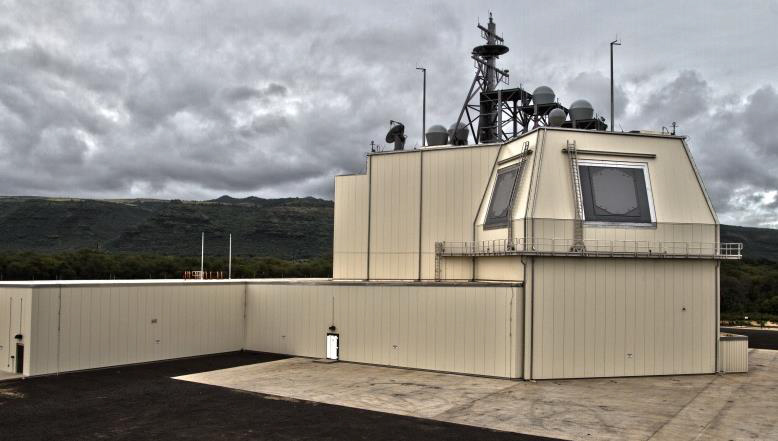Press Release
Aegis Ashore System Successfully Intercepts Target Missile at Pacific Test Range
APL Plays Key Role in First Aegis Ashore Engagement
Engineers from the Johns Hopkins University Applied Physics Laboratory (APL) in Laurel, Maryland, in cooperation with the Missile Defense Agency (MDA) and U.S. Navy, played a key role in the first intercept flight test of the Aegis Ashore system, resulting in the successful intercept and destruction of a ballistic missile target at the Pacific Missile Range Facility (PMRF).
The Aegis Ashore system is nearly identical to the sea-based Aegis BMD system that is deployed aboard Aegis Baseline 9 Destroyers around the world. The recent operational test is a critical milestone for the Aegis Ashore system. During the test, the target, representing a medium-range ballistic missile threat, was air-launched from a C-17 military aircraft over the broad ocean area southwest of Hawaii. An Army-Navy/Transportable Radar Surveillance and Control Module 2 (AN/TPY-2) radar, located at PMRF, detected and tracked the target. The AN/TPY-2 relayed target track information to the Command, Control, Battle Management, and Communications (C2BMC) system for further transmission to the Aegis Ashore Missile Defense Test Complex at PMRF.
Based on the AN/TPY-2 data, Aegis Ashore calculated an intercept solution for the incoming target and fired a Standard Missile-3 (SM-3) Block IB Threat Upgrade guided missile. The Aegis Ashore system guided the SM-3 along an intercept trajectory to the point where the SM-3’s kinetic warhead acquired the incoming target reentry vehicle, diverted into its path, and destroyed it through the kinetic energy of direct impact.
The primary purpose of this test, designated Flight Test Operational-02 Event 1a, was to assess the operational effectiveness of the Aegis Ashore element as part of the Ballistic Missile Defense System (BMDS) Phased Adaptive Approach (PAA) Phase 2 architecture. APL experts worked closely with MDA and industry partners to plan the complex test scenario and analyze system performance prior to the flight.
“This intercept test validates that we have successfully adapted and integrated the proven sea-based Aegis BMD capability in Aegis Ashore, and serves as a key technical demonstration of the BMDS architecture for PAA Phase 2,” said APL’s Vishal Giare, APL’s program area manager for Aegis BMD.
As the technical direction agent for Aegis BMD, APL is an integral part of the full systems engineering life cycle, including testing and transition of the BMD capability to the fleet. The Aegis system is developed by Lockheed Martin, Moorestown, New Jersey. The Standard Missile is developed by Raytheon Missile Systems, Tucson, Arizona. The success of FTO-02 E1a improves the Aegis BMD flight-test record to 33 successful intercepts in 40 live-fire events.
